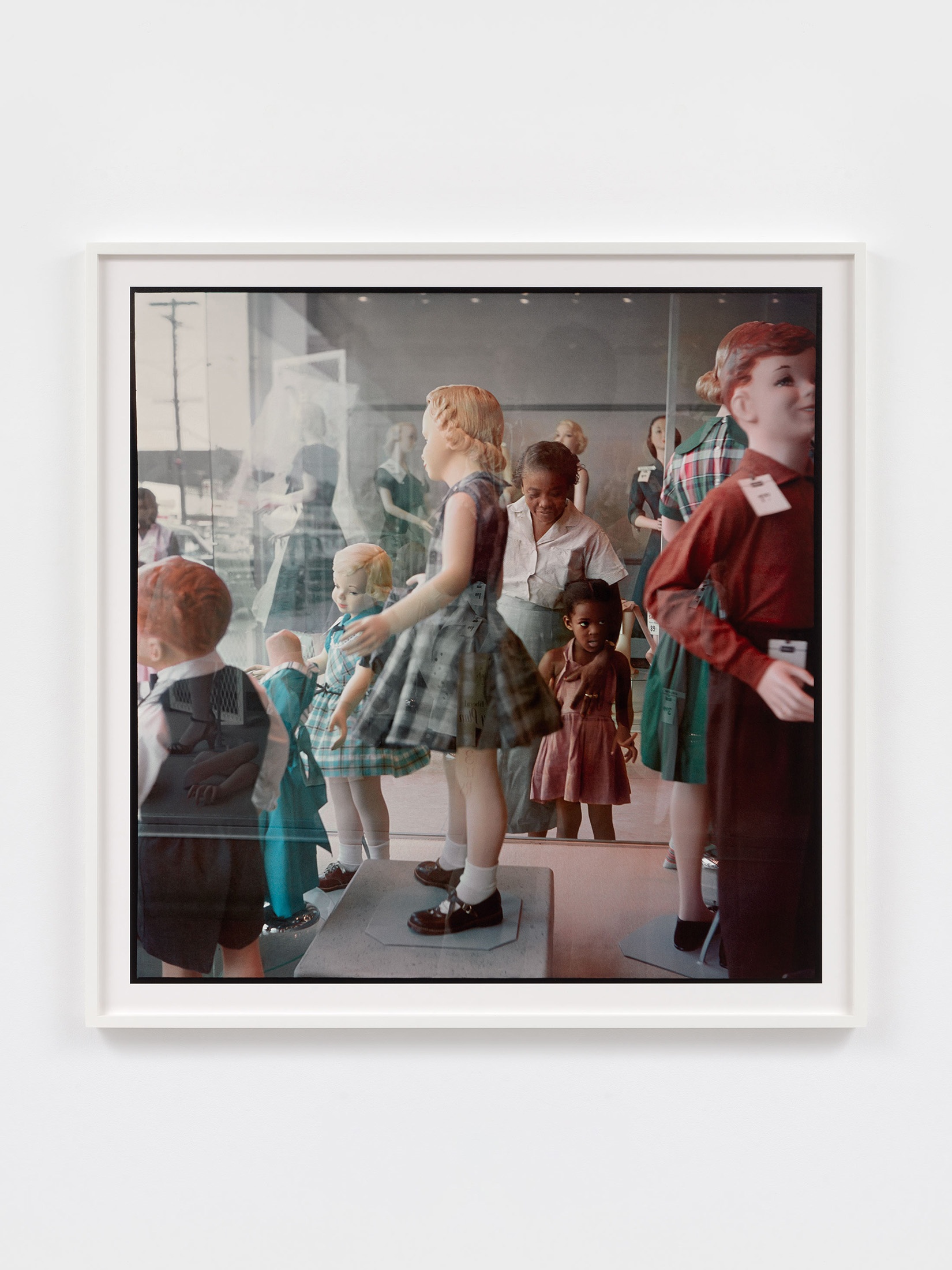Gordon Parks

In 1956, Parks published twenty-six photographs in a feature for Life Magazine, ‘The Restraints: Open and Hidden’, a study of black life in a segregated town. These collected images were of personal resonance to the artist. The youngest of 15 children raised in impoverished circumstances in the American South, Parks was sent away from home as a teenager that he might be spared what his mother called “the bitter trials of Kansas.” For this assignment, he returned to Jim Crow country. Alabama was at the time the centre of the burgeoning Civil Rights Movement – the Montgomery bus boycott, precipitated by Rosa Parks (no relation), was then underway, and the first African American student, Autherine Juanita Lucy, had recently been admitted to the state’s white university. Yet any such overtures to equal rights came at a cost: those opposed to the ideals of racial equality were quick to retaliate.
However prosaic the scenes Parks pictured in this series, both he and the families he photographed undertook great personal risk in the making of these images; all were harassed and intimidated by white townsfolk (so much so that Life later provided $25,000 towards the families’ relocation). As Parks wrote in his diary while on this assignment: “My thoughts swirl around the tragedies that brought me here. Just a few miles down the road, Klansmen are burning and shooting blacks and bombing their churches… Lying here in the dark, hunted, I feel death crawling the dusty roads.”
While Ondria Tanner and Her Grandmother Window-shopping, Mobile, Alabama, 1956, was not included in the original Life article, it featured a similar image with the extended caption: “Ondria Tanner and grandmother, Ondria Thornton, look at fashions. They look long, buy carefully because of limited funds.” (Not mentioned but clearly apparent is the uniform whiteness of the storefront mannequins.) This photograph was among the 200-odd colour transparencies believed lost but later found in 2011. It is included in the posthumous photobook Gordon Parks: Segregation Story, expanded edition (2022), published by Steidl and The Gordon Parks Foundation. As Maurice Berger writes in his introduction, With a Small Camera Tucked in My Pocket:
By focusing on the everyday routines of their subjects – and on their individual sensibilities, sensitivities, and aspirations – these photographs countermanded a mainstream media that typically viewed the movement through the eyes and anxieties of white people or through the high drama of historic speeches, conflagrations, and demonstrations. The pictures Parks took for Life achieved one of his abiding goals as an artist and activist: to make visible the nuances of a story that many chose to ignore or dismiss.
b.1912, Fort Scott; d.2006, New York
Gordon Parks’ life does not lend itself to summary. “A poet, and a pianist, a classical music composer, and one very at home with the blues,” a LIFE magazine profile on him reads, “a journalist, a novelist, and a man with enough life that even three autobiographies cannot contain the whole, a painter of oils and watercolours, and a photographer of street gangs and Paris boulevards, of fashion extravaganzas and mean Rio streets, and, most of all, a man who will not yield to intimidation.” Parks was both the first black photojournalist staffer at LIFE, where he worked for two decades from 1948, and the first person of colour to write and direct a major Hollywood feature, The Learning Tree (1969), based on his bestselling semi-autobiographical novel. In his roles as photographer and activist, Parks was instrumental in the Civil Rights Movement, documenting not only moments of political significance but also the intimate, everyday lives of African Americans. His deeply humanist lens and commitment to social justice afforded a compelling view into race relations, poverty, crime, and policing beyond the spectacle of violence, which proved influential in shifting popular sentiment and national policy.